This article was produced with Steven Kirkpatrick and the ElliottWaveTrader.net metals team.
For those that have followed our analysis provided to the readership at Seeking Alpha, you will know that we look for a sweet spot where fundamentals meet technicals.
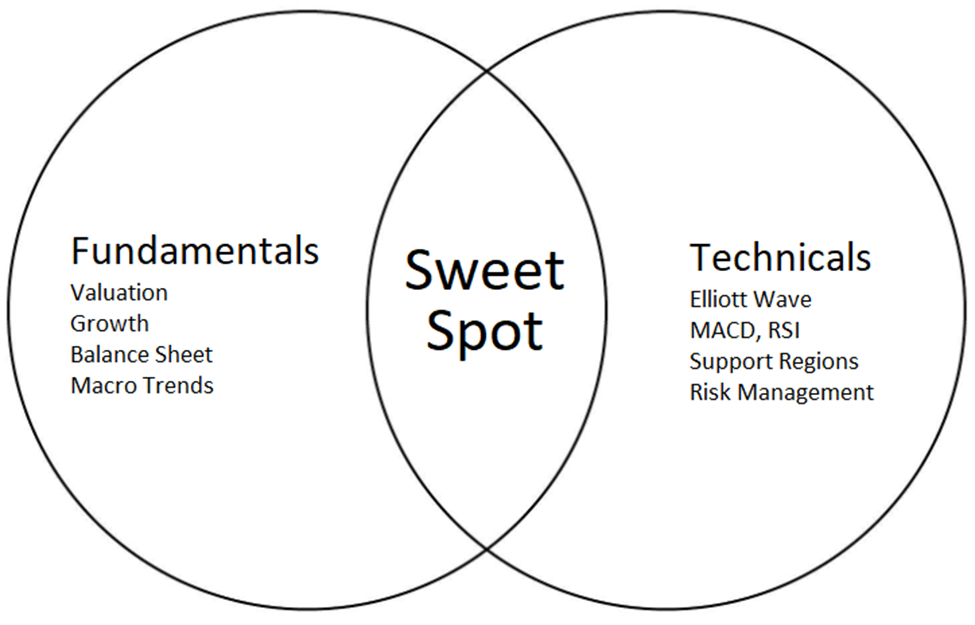
Venn Diagram: Overlap of FA & TA (EWT)
As the developing nations of the world endeavor to replace fossil fuels with renewables, the demand for copper is expected to increase dramatically over the next decade. But with economic stagnation in China, and concerns of an economic slowdown in much of Europe and possibly the US, copper prices have become as dull as an old penny. The price of the red metal has fallen from $4.70 per pound in March 2022 to roughly $3.70 today - a decline of about 20%.
From a fundamental perspective, there's an expected shortfall in copper supply that's likely to put significant upward pressure on prices. But soft pricing may persist for several months as production is expected to outstrip demand through the end of 2023 and 1Q2024 (Source: International Copper Study Group). From there, several industry analysts are anticipating a supply squeeze. For example, Goldman Sachs foresees a supply shortfall that will drive the price of copper to $4.50 per pound by late 2024, and to more than $6.80 per pound in 2025.
Concurring with this perspective, Max Layton, the Managing Director of Commodity Research at Citi, said he believes now is an ideal time for investors to buy as the price of copper is still muted on global recession concerns. The red metal has declined in price by approximately 26% from its all-time high of nearly $5.00, set in October 2021. According to Layton, copper could top out at $6.80 per pound by 2025, a jump that would "make oil's 2008 bull run look like child's play."
Similarly, the consulting firm McKinsey & Co. is projecting copper demand to reach 36.6 million metric tons by 2031 while total available production is expected to be about 30.1 million metric tons. But let's also be clear about something else: The world is not going to run out of copper - not for a very long time, if ever. The problem is getting copper ore out to the ground and turning it into a saleable product.
It takes on average about 16 years for a copper mine to go from initial construction to actual production. Add in lead times for exploration and permitting, and it can take far longer. For example, the largest known deposits for a development stage copper mine within the "lower 48" - the Resolution Mine in Arizona - have been under development for 26 years. This joint venture between Rio Tinto Group (RIO) and BHP Group Limited (BHP) has consumed more than $2.0 billion in capital, yet copper production will not begin for at least another 10 years.
It's perhaps ironic that the greatest opponents to the project are often the same environmental groups seeking to eliminate the use of fossil fuels while demanding massive increases in solar and wind power projects, and the replacement of gasoline-powered cars with battery-powered versions. To achieve such goals, massive amounts of copper must be produced.
Another challenge is that much of the "low-hanging fruit" of high-quality and easily accessible ore has already been picked. While there's a great abundance of copper ore around the world, most of it is lower-grade deposits that require more capital-intensive facilities to bring into production. This comes at a time when committed investment capital expenditures to develop new mining production have dropped by a startling amount over the past 12 years as shown in the chart below:
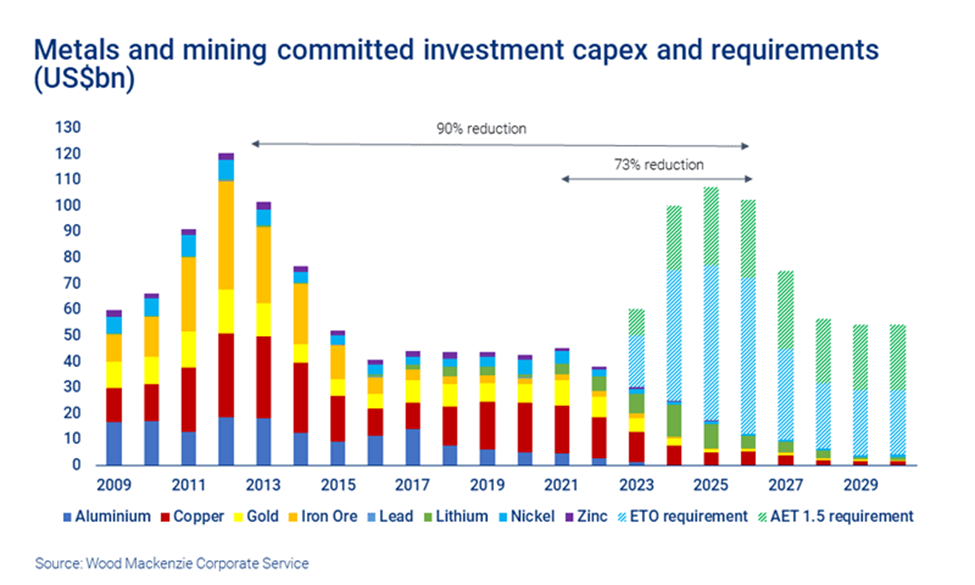
Wood Mackenzie Corp Srvc
Investors also may want to question the notion that we will ever become "fossil fuel free" sometime in the foreseeable future. Is the investment community being realistic about the outlook for such an energy transition? As noted by a report from S&P Global: "The challenge of meeting net-zero emissions by 2050 will be short-circuited and remain out of reach unless significant new copper supply comes online in a timely way…"
Considering that only 3% of the world's energy is derived from wind and solar, it appears all but certain that "net zero" cannot be obtained at any time in the foreseeable future. And here's a fun fact: About 10% of the world's energy is derived from burning wood - three times wind and solar. While discussions on this topic often morph into political debates, we nonetheless remain bullish on copper, including miners such as Southern Copper Corporation (NYSE:SCCO) and Freeport-McMoRan Inc. (NYSE:FCX).
While the supply/demand dynamics for copper appear quite positive, we never rely on such fundamentals alone. But in the case of copper, our technical analysis (using Elliott Wave charting) aligns nicely with many industry analysts who rely primarily on fundamentals.
Here's Where Fundamentals Meet Technicals
We have been actively tracking SCCO and FCX well before their lows were struck in the summer of 2022. They have been frequently featured in our Wave Setups. As a quick aside, Wave Setups are stocks covered by our lead analysts, Zac Mannes and Garrett Patten, with the most interesting setups. These are setups at or nearing ideal support or with promising initial moves off important lows. To give you an idea of how many stocks are updated in a month's time, there have been 20 stocks featured as Wave Setups in the last four weeks.
For starters, here's the outlook for copper futures:
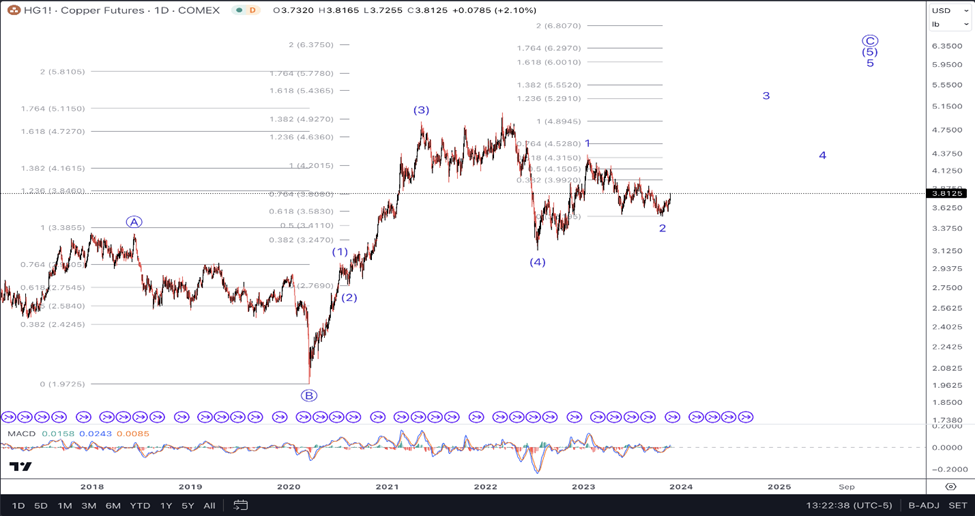
Hg chart by Levi (EWT)
We are thus looking at copper prices approaching or even exceeding $6 per pound in about two years. But in the near term, with a more micro view, we are expecting further softness in copper prices, likely falling a bit below $3.50 per pound in Q1 2024 as shown in the chart below prepared by analyst Zac Mannes:
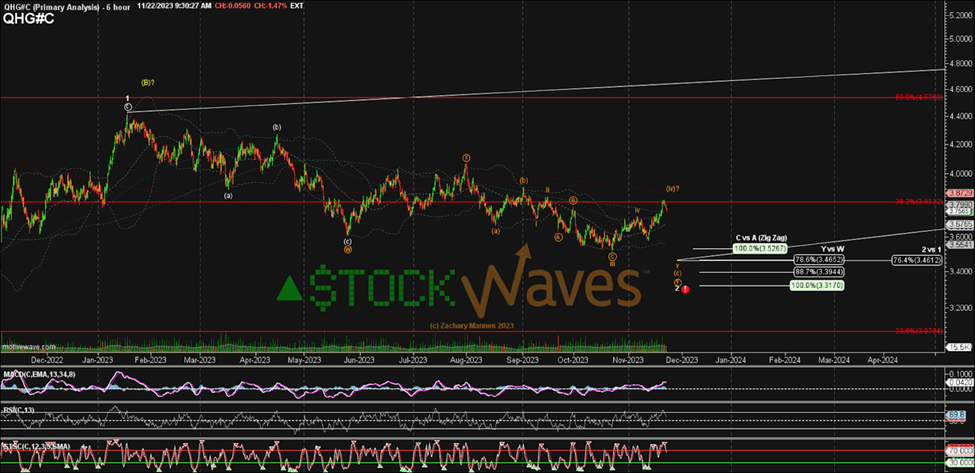
HG Copper futures by Zac Nov 2023 (EWT)
Here's the latest chart from Zac for FCX, who notes: "We can tentatively treat a bottom in place but need to see more to confirm. A recovery to $38.00 would likely confirm that a bottom is in place, and we are on our way to a bullish pattern."
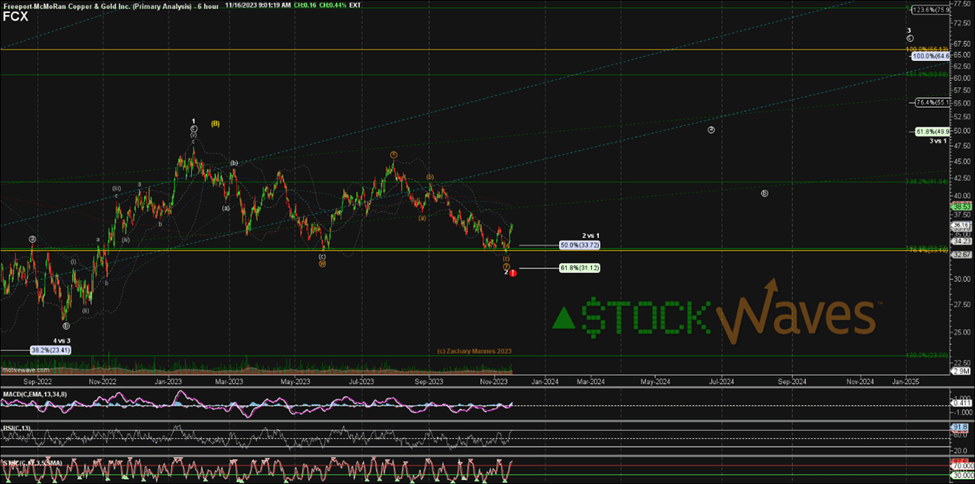
FCX chart Nov 2023 by Zac (EWT)
After tracking SCCO for the past few years, analyst Garrett Patten presented our members with a Wave Setup on Aug. 18, 2022, that included the following chart:
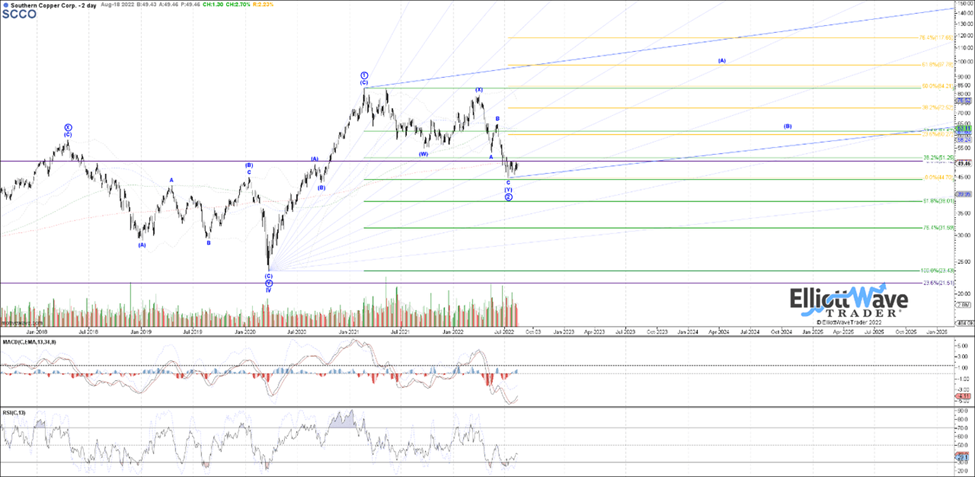
SCCO chart by Garrett Aug 2023 (EWT)
Those who took a long position when this set-up was presented are now up more than 50% (including dividends) in spite of the wobbly nature of the copper market during this period.
The following table is what accompanies each wave setup, and was included in Garrett's chart presented above. We provide setups for both long and short positions. Time is either "Y" (years) or "M" (months) as an approximate holding period and occasionally "W" (weeks). Invalidation is the point at which the price of the stock violated the Elliott Wave guidelines that were used to create the original wave setup. The ranking is either 3 or 4 on a scale of 1 to 4, with "4" being stocks with the highest probability of reaching their target. Lower-ranking securities do not qualify as Wave Setups.
Charts for all Wave Setup stocks are updated frequently - usually at least once a week. This gives a regular "report card" on the price expectations that may be impacted by recent price action. When a resistance level is met it elicits an update to some values in the table, most often support and a new resistance level.
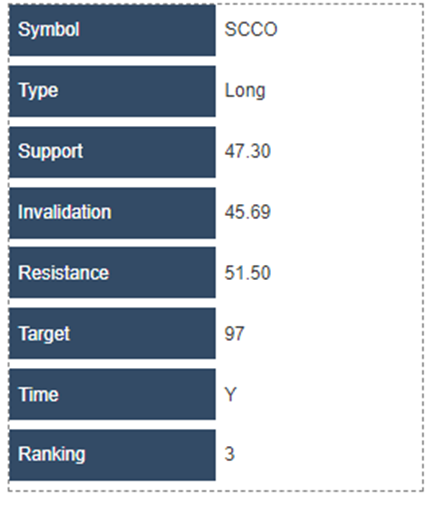
Wave Setup table (EWT)
Garrett's most recent chart suggests that SCCO is likely to drop in price in the near term, but resume its rise in early 2024:
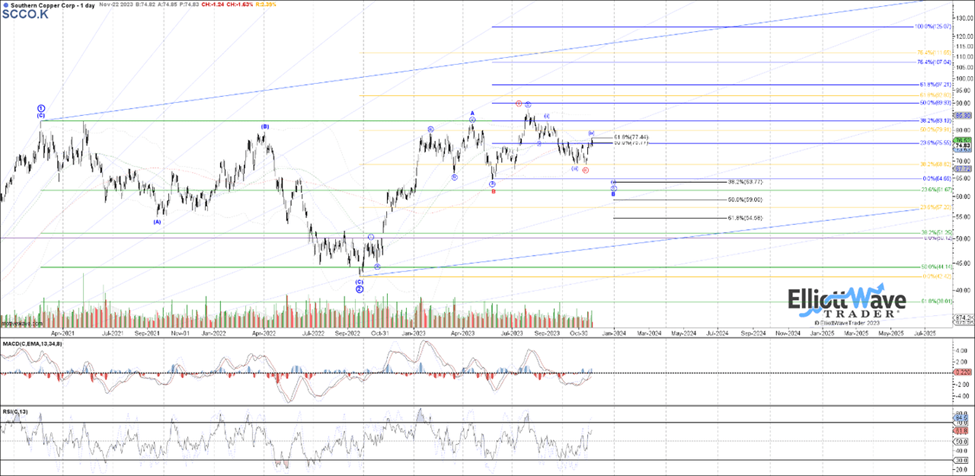
SCCO chart Nov 2023 (EWT)
Elliott Wave Analysis Will Blow Your Mind
Once you become aware of the power of Elliott Wave analysis, you will never look back. Yes, there will always be skeptics. When properly done, Elliott Wave analysis is a highly effective tool that puts us on the right side of a trade far more often than not. Nothing is perfect in this world, but for those looking to open their eyes to a new universe of trading and investing, why not consider studying this further?
We explain the challenge of using this unique form of technical analysis as follows: Let's start with the understanding that it takes a lot of detailed work and calculation in order to perform a proper Elliott Wave analysis. Moreover, it is very difficult to learn and, unfortunately, easy to use incorrectly. But then again, show me anything that is truly worthwhile that does not require an initial investment of persistence, diligence, and hard work.
To this end, most of what I see being claimed as Elliott Wave analysis is nothing more than what I call 'wave slapping'. This is when an analyst places numbers and letters on a chart based either upon the 'look' of the chart, or to support their prior bias about market direction; a skilled Elliottician has no bias. Since I would classify most analysis presented as Elliott Wave analysis as such, resultantly, most analysis is rarely correct more than 50% of the time. And, this lends to the argument about Elliott Wave being too subjective in nature.
So, when investors follow this type of 'analysis' and see how often it is wrong, they make the assumption that Elliott Wave really does not work, and are turned off.

